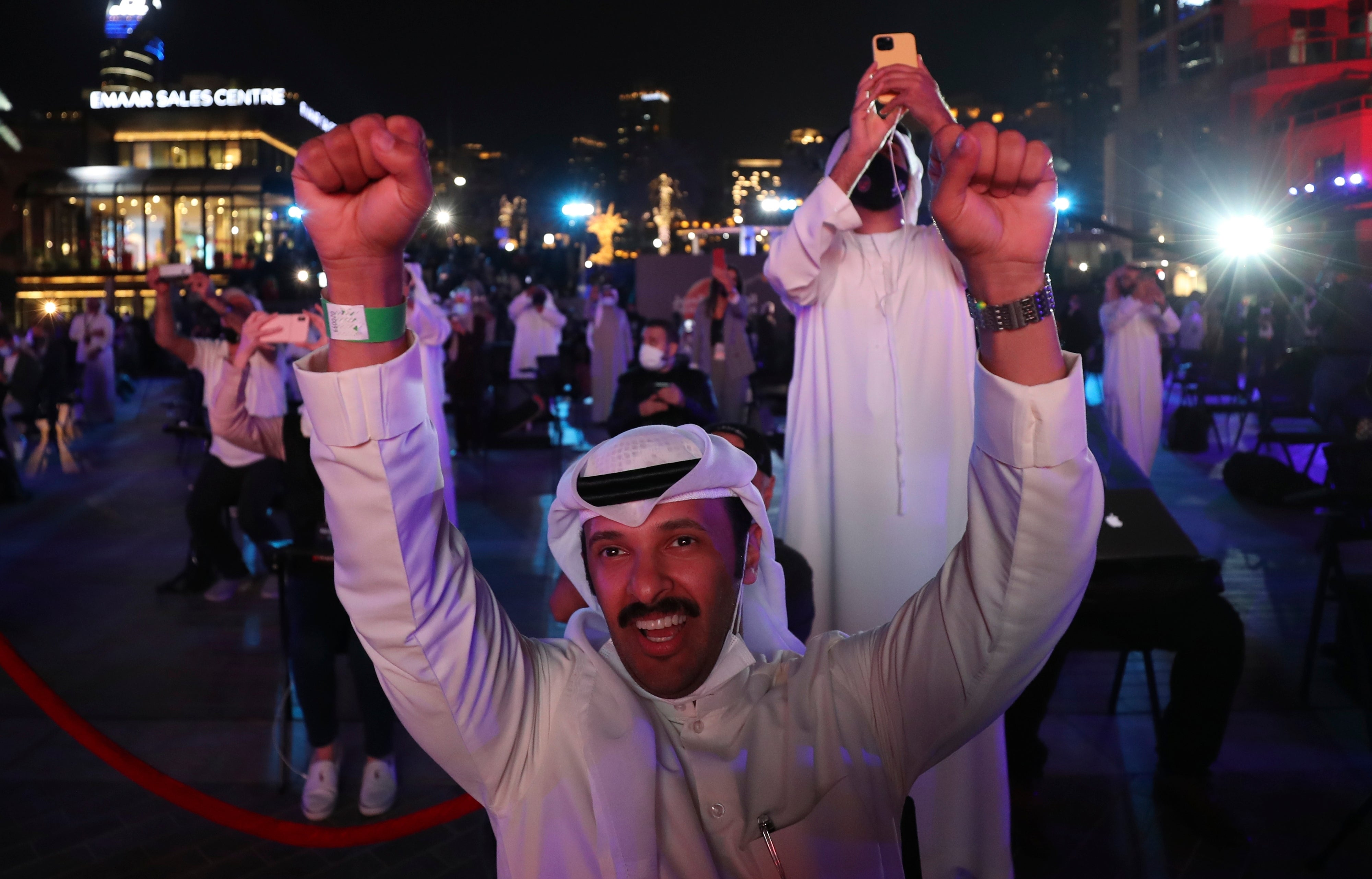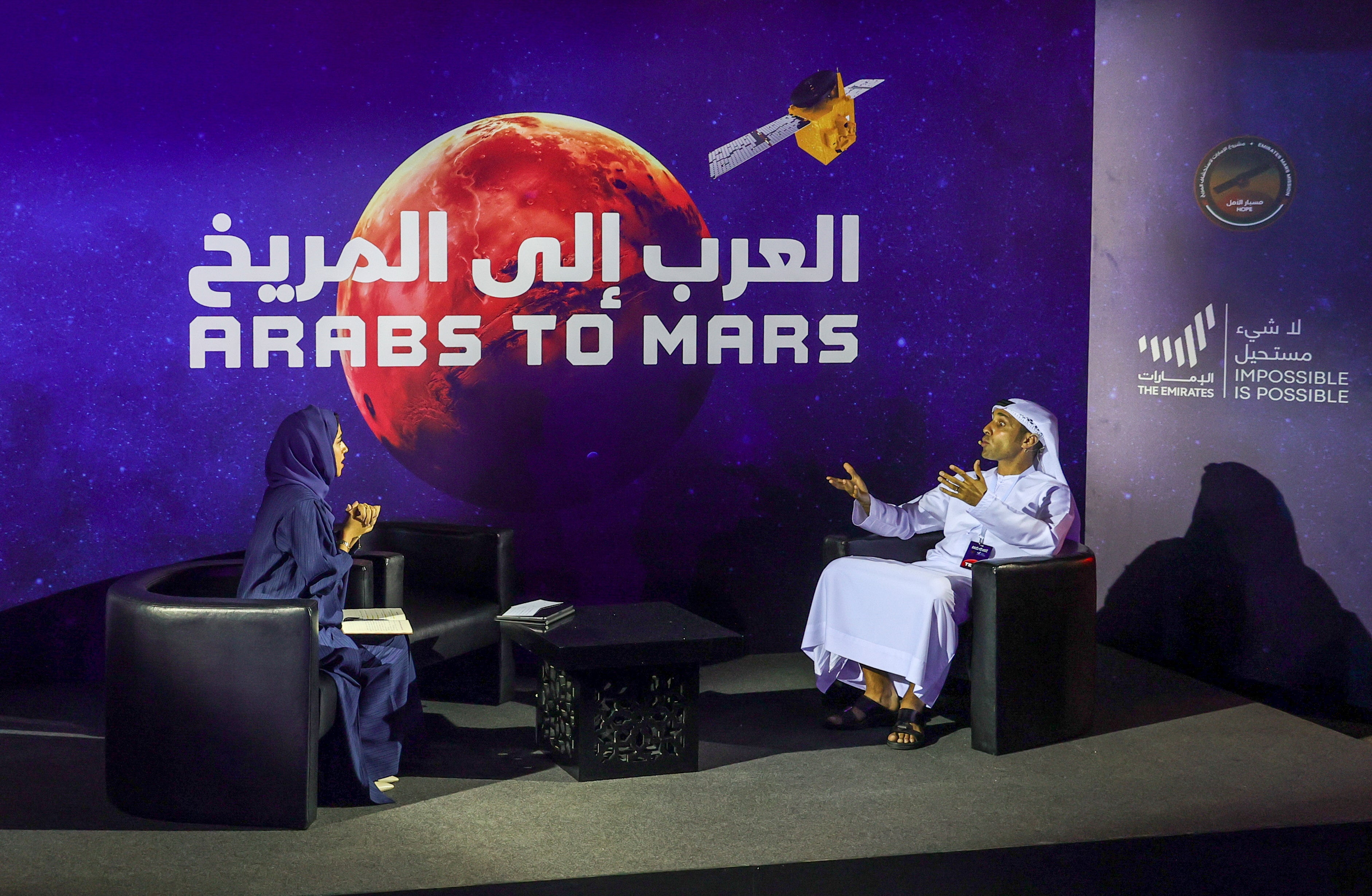Out of this world: Why the UAE’s mission to Mars is a geopolitical triumph
The flight heralds a modern space race between new powers, writes Diplomatic Editor Kim Sengupta


After a voyage of seven months and 300 million miles, the spacecraft Hope has reached its destination, from where it will offer an insight into what would be needed to support life on Mars and provide vital information about the current state of the Red Planet.
During its 687 days in orbit, a year in Martian terms, the mission from the UAE will chart the changing atmosphere and weather patterns through four seasons, along with levels of hydrogen and oxygen, and send back a steady stream of data and imagery.
The successful flight of the spacecraft – Al Amal in Arabic – has been hailed by the Emiratis as a great scientific achievement. Missions to Mars have just a 50 per cent chance of success. But it is also seen as a major geopolitical triumph.
The spacecraft has arrived in Mars’s orbit before a Chinese and an American mission which are also heading to the planet in what is seen as a new unfolding space race. The mission can also be seen as an interplanetary extension of the Gulf state’s desire to punch above its weight in the international arena, mirroring an ambitious and combative foreign policy which has seen it getting involved in conflicts in Yemen, Libya and Syria.
Mohammed bin Zayed al-Nahyan, ruler of the UAE and architect of his nation’s drive to become a player on the world stage, has given his full backing to the space programme. A new satellite which will be launched in 2023, the first to be manufactured in the country, has been named MBZ-SAT in his honour.
The flight also comes at a time when space is being seen as a new frontier for military action, with countries setting up “spaceforce” units within their armed forces, and the US and UK accusing Russia of firing anti-satellite weapons.
The UAE mission is civilian, not military, but it is part of a restarted space race which, in the case of the US and China, is part of a wider rivalry which has dramatically intensified in recent times. The Chinese Tianwen1 (Questions to Heaven) spacecraft is due to arrive 24 hours after Hope, and the American Nasa rover, Perseverence, next week.
All three missions launched last July – the UAE’s from Japan – to take advantage of an alignment between Earth and Mars that occurs only every 26 months.
“Competition in space is heating up. Three missions arriving at Mars in one month is unprecedented; collectively, they will add a lot to our knowledge of the Red Planet,” said Christopher Impey, a professor of astronomy and associate dean in the College of Science at the United States-based University of Arizona.
“It’s a new space race. The China-US rivalry is a successor to the Soviet-US rivalry from the early space age. China is very ambitious, with plans for a moon base and eventually a Mars base and their own space station. They are spending heavily, and success in space is directly tied to national pride and the projection of Chinese power.”
The UAE announced that it, too, will set up a manned base on the planet, and build a laboratory complex to be known as Mars Science City. That, however, will be in a hundred years’ time. The current plan is to create a young technical workforce and inspire others to study science and engineering.
Although the spacecraft was built in the US, in Colorado, 200 of the 450 people who worked on the Mars mission are Emiratis, and the fact that it presented a challenge is one of the reasons, according to the UAE, that the Mars mission was undertaken rather than an easier project.
“If you want to stimulate growth really rapidly, and you want to enable an entire generation to develop their skills and capacity and capability in a rapid manner, you need to take on large risks. You wouldn't get there with something that's more guaranteed,” says Sarah Al Amiri, chair of the UAE Space Agency. “It’s been excellent to further science communication with the general public and gain understanding in an area which was largely ignored, not only within the country, but within the region. It wasn’t something that was a topic of conversation.”
Meanwhile the current accomplishment is being celebrated. Public buildings were lit up in the colour of the Red Planet; there was a webcast for live coverage as well as regular updates on television bulletins. Planned street parties, though, were cancelled because of the pandemic.

Visitors arriving at UAE airports received a “Martian Ink” stamp on their passports, made from volcanic basalt rocks with a crimson hue. The message on the stamp stated: “You’ve arrived in the Emirates. The Emirates is arriving at Mars on 09.02.2021.”
Ms Al Amiri says: “Hope reaches Mars at a profound double anniversary: 2021 marks both the 50th anniversary of the Emirates and 50 years since the first man-made object landed on the Red Planet.
“As a young nation, it is a particular point of pride that we are now in a position to make a tangible contribution to humanity’s understanding of Mars. This also marks an important point for the Emirates to continue the drive to diversify its economy utilising science and technology. Any image we got of Mars would be iconic but I just can't imagine what it's going to feel like to get that first full-disk image of Mars.”
Join our commenting forum
Join thought-provoking conversations, follow other Independent readers and see their replies
Comments


Bookmark popover
Removed from bookmarks